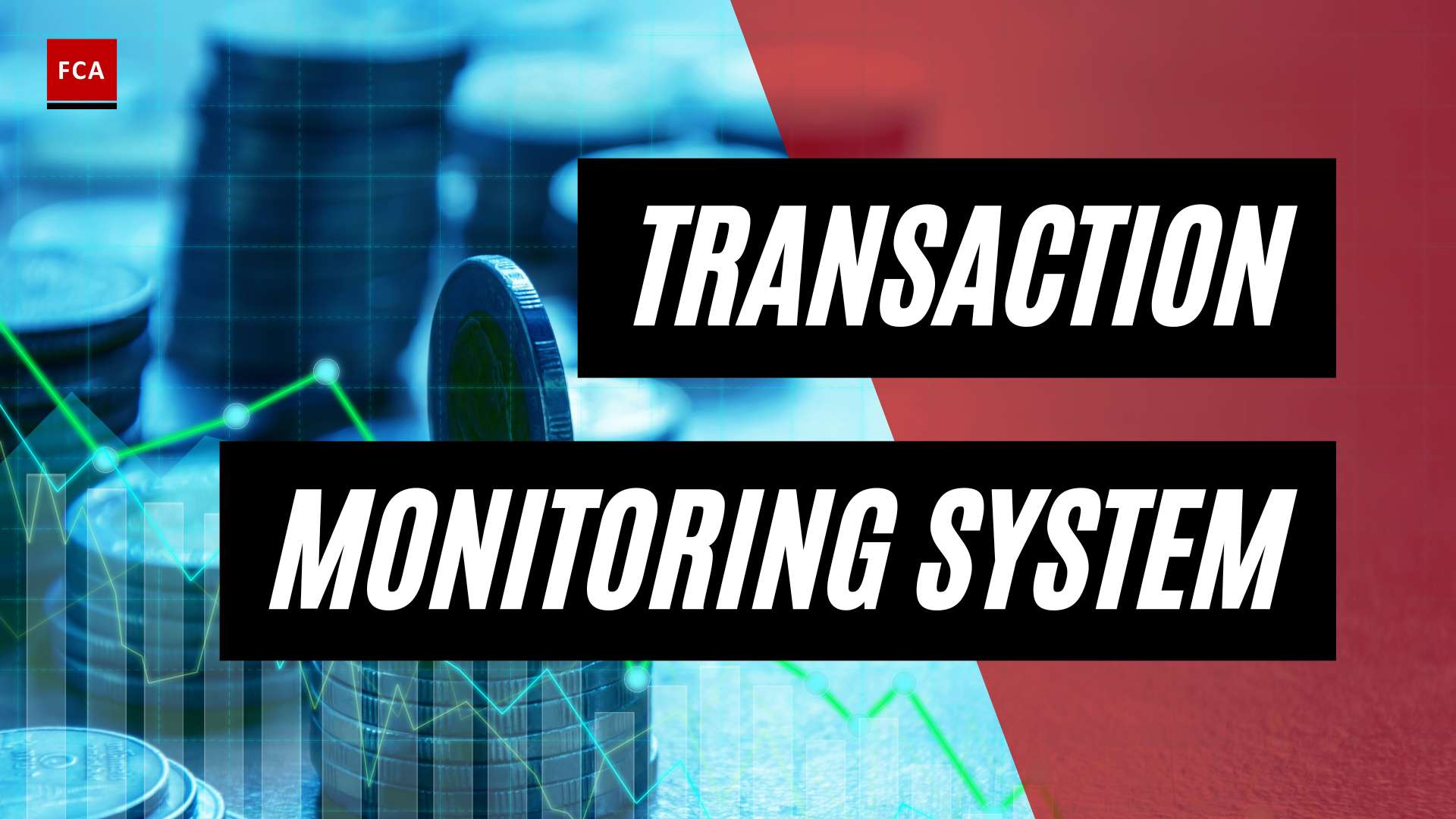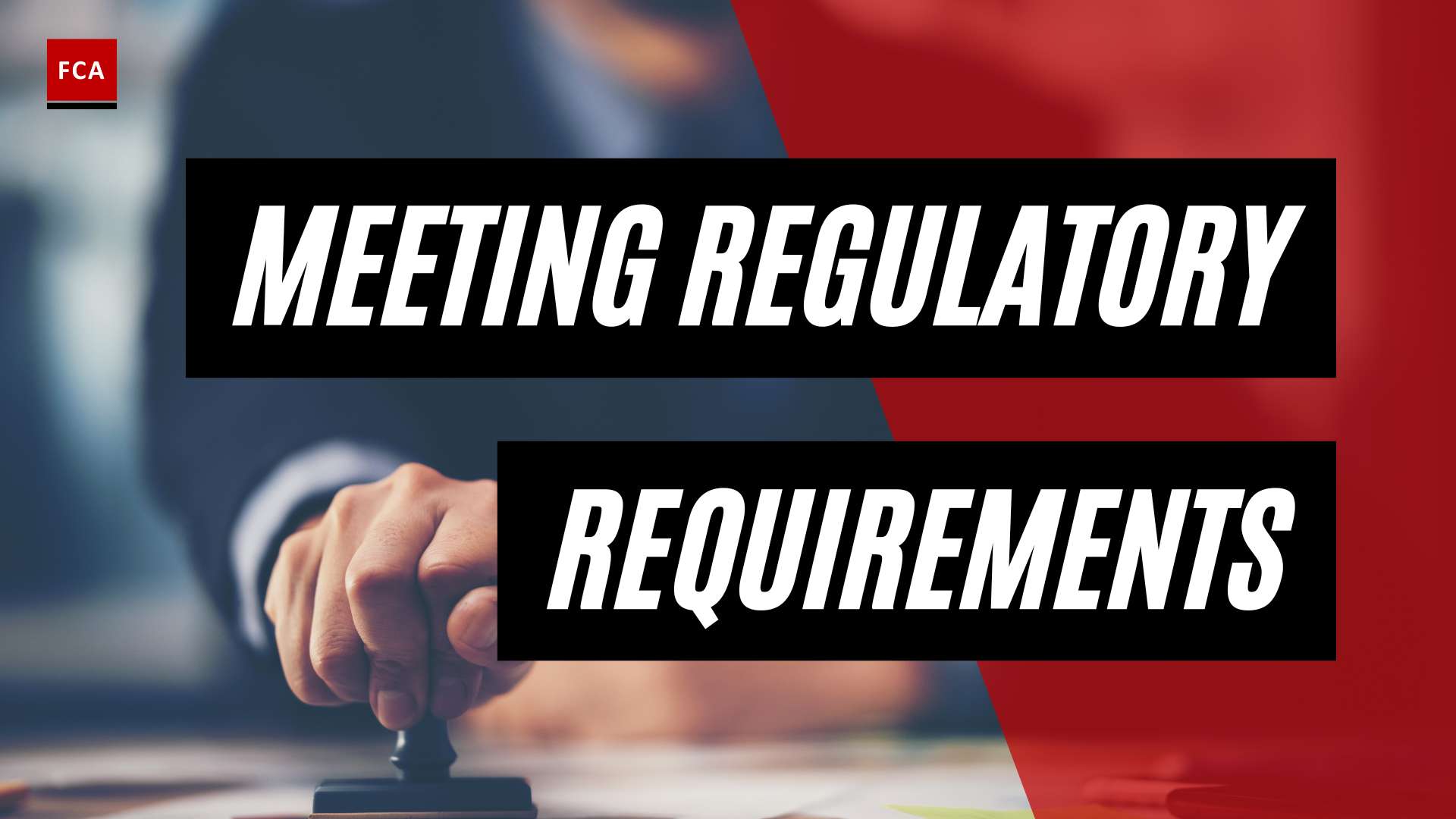Understanding AML Regulations in Europe
To effectively navigate the Anti-Money Laundering (AML) landscape in Europe, it is crucial to have a clear understanding of the AML regulations that govern financial institutions and other obliged entities. This section provides an introduction to AML regulations and explores the evolution of AML directives in Europe.
Introduction to AML Regulations
The first AML directive was adopted by the European Union (EU) in 1990 to prevent the misuse of the financial system for the purpose of money laundering. This directive required obliged entities to apply customer due diligence requirements when entering into a business relationship. Since then, the EU legislative framework has undergone continuous revisions to address new risks related to money laundering and terrorist financing, covering areas such as virtual assets and crowdfunding (European Commission – EU Context of Anti-Money Laundering).
Evolution of AML Directives in Europe
The European Parliament has enacted several AML directives, each building upon and replacing the previous ones. Let’s explore some of the key directives:
4th Anti-Money Laundering Directive (4AMLD)
The 4th AMLD, approved in 2015, brought significant changes to the AML landscape in Europe. It introduced a risk-based approach to customer due diligence (CDD) and imposed AML obligations on additional sectors, including gambling firms. The directive also focused on transparency by requiring the listing of Ultimate Beneficial Owners (UBOs) owning 25% or more of a legal entity in national registries.
5th Anti-Money Laundering Directive (5AMLD)
The 5th AMLD, implemented in 2020, aimed to further strengthen AML regulations in Europe. It introduced several key provisions, including the extension of AML obligations to virtual currency exchanges and custodian wallet providers. The directive also expanded the scope of the beneficial ownership register and imposed stricter controls on high-risk third countries (europa.eu).
6th Anti-Money Laundering Directive (6AMLD)
The most recent addition to the EU AML framework is the 6th AMLD, which came into effect on December 3, 2020. This directive harmonizes the definition of predicate offenses against money laundering across all member states, including cybercrime and environmental crime. It also extends criminal liability to legal persons, allowing for the punishment of companies involved in criminal activities. Furthermore, the 6th AMLD introduces tougher punishments for money laundering crimes, with a minimum sentence of 4 years of imprisonment (London Stock Exchange Group).
Understanding the evolution of AML directives in Europe provides a foundation for comprehending the compliance requirements and obligations placed upon financial institutions and other entities operating within the EU. Subsequent sections of this guide will delve deeper into the key directives, compliance requirements, and specific AML regulations in major European economies.
Key AML Directives in Europe
To effectively combat money laundering activities, Europe has implemented several key Anti-Money Laundering (AML) directives. These directives play a crucial role in establishing a comprehensive regulatory framework to prevent money laundering and terrorist financing. Let’s explore three significant AML directives in Europe.
4th Anti-Money Laundering Directive (4AMLD)
The 4th Anti-Money Laundering Directive (4AMLD) was passed by the European Parliament in 2015 and came into effect in 2017. It introduced more stringent requirements for customer due diligence, the identification and verification of beneficial owners, and the reporting of suspicious activities compared to previous regulations. The 4AMLD aimed to enhance transparency, consistency, and cooperation among European Union (EU) member states in the fight against money laundering and terrorist financing.
5th Anti-Money Laundering Directive (5AMLD)
Building upon the foundation laid by the 4AMLD, the 5th Anti-Money Laundering Directive (5AMLD) expanded the regulatory framework to address emerging risks in the financial sector. It came into effect on January 10, 2020, after being implemented and finalized by all EU member countries. One of the notable additions brought by the 5AMLD was the inclusion of virtual currency exchanges, custodian wallet providers, pre-paid card issuers, and art dealers within the scope of AML regulations. This directive aimed to enhance transparency in financial transactions and strengthen the EU’s ability to combat money laundering and terrorist financing.
6th Anti-Money Laundering Directive (6AMLD)
The 6th Anti-Money Laundering Directive (6AMLD) represents the latest update to the EU’s AML regulatory framework. This directive was implemented to further strengthen the EU’s fight against money laundering and terrorist financing. It extends the scope of money laundering and terrorist financing criminal offenses and harmonizes the definition of money laundering offenses across member states. Notably, the 6AMLD introduces tougher punishments, with the sentence for money laundering crimes increased to a minimum of 4 years of imprisonment. It also extends criminal liability to legal persons, such as companies or partnerships, holding them accountable for the actions of employees involved in criminal activities. The 6AMLD aims to enhance the effectiveness of the EU’s AML regime and promote cross-border collaboration in combating financial crimes.
These key AML directives in Europe lay the foundation for a robust regulatory framework to combat money laundering and terrorist financing. By implementing comprehensive due diligence measures and reporting obligations, these directives aim to enhance the transparency and integrity of financial systems across the EU. It is essential for organizations and professionals in the compliance, risk management, and anti-money laundering sectors to stay updated on these directives to ensure adherence to the evolving AML regulations in Europe.
Compliance Requirements in Europe
When it comes to Anti-Money Laundering (AML) regulations in Europe, there are several specific compliance requirements that organizations must adhere to. These requirements aim to prevent money laundering and terrorist financing activities. The key compliance requirements in Europe include Customer Due Diligence (CDD), Enhanced Due Diligence (EDD), and Reporting Obligations.
Customer Due Diligence (CDD)
Customer Due Diligence (CDD) is a fundamental component of AML compliance in Europe. It involves the process of verifying the identity of customers or clients to ensure they are who they claim to be. The European Union’s 4th Anti-Money Laundering Directive (4AMLD) introduced more stringent requirements for CDD compared to previous regulations. These requirements include:
- Conducting identity verification for customers, including beneficial owners, using reliable and independent sources of information.
- Assessing and understanding the purpose and nature of the business relationship.
- Monitoring and conducting ongoing due diligence on the business relationship to detect and report any suspicious activities.
The 5th Anti-Money Laundering Directive (5AMLD) expanded the scope of CDD requirements to include virtual currency exchanges, custodian wallet providers, prepaid card issuers, and art dealers, among others. The most recent directive, the 6th Anti-Money Laundering Directive (6AMLD), further strengthens the AML framework by enhancing the criminal law framework to combat money laundering and terrorist financing.
Enhanced Due Diligence (EDD)
Enhanced Due Diligence (EDD) is an additional level of scrutiny applied to customers or clients who pose a higher risk of money laundering or terrorist financing. EDD measures go beyond standard CDD requirements and involve a more thorough examination of the customer’s background, transactions, and source of funds.
Under the AML regulations in Europe, organizations are required to implement EDD measures in specific situations, such as when dealing with politically exposed persons (PEPs), high-risk countries, complex and high-value transactions, and unusual patterns of activity. EDD helps organizations mitigate the risk of being involved in illicit financial activities and ensures compliance with regulatory obligations.
Reporting Obligations
AML regulations in Europe impose reporting obligations on organizations to detect and report suspicious activities. The reporting obligations include submitting suspicious activity reports (SARs) to the relevant financial intelligence units (FIUs) when there are reasonable grounds to suspect money laundering or terrorist financing.
The reporting obligations also extend to transactions that may be related to proceeds of crime or connected to a predicate offense. Organizations are required to have robust systems and controls in place to identify, investigate, and report suspicious activities effectively. Failure to comply with reporting obligations can result in significant penalties and reputational damage.
By implementing and adhering to these compliance requirements, organizations can contribute to the overall efforts in combating money laundering and terrorist financing. It is essential to stay updated with the latest AML directives and regulatory changes to ensure ongoing compliance. For more information on AML regulations in Europe, refer to our articles on EU AML legislation and EU AML framework.
AML Regulations in Major European Economies
To effectively combat money laundering and ensure financial integrity, major European economies have implemented robust Anti-Money Laundering (AML) regulations. Let’s explore the AML landscape in Germany, the Netherlands, France, and Spain.
Germany
Germany, as one of the largest economies in Europe, has a comprehensive AML framework. The country follows the European Union (EU) AML directives (Sanction Scanner). Financial institutions in Germany are subject to stringent AML requirements, including customer due diligence (CDD), transaction monitoring, and reporting suspicious activities. The German AML laws aim to prevent money laundering, terrorist financing, and other financial crimes by promoting transparency and cooperation among relevant institutions.
Netherlands
The Netherlands is known for its strong commitment to combating money laundering and other financial crimes. The country’s AML regulations are in line with the EU AML directives. Financial institutions in the Netherlands adhere to strict compliance measures, including robust customer due diligence, ongoing monitoring of transactions, and reporting suspicious activities. The Dutch AML laws emphasize the need for effective risk management and cooperation between public and private sectors to combat money laundering effectively.
France
France, with its prominent financial sector, has implemented rigorous AML regulations to safeguard its economy. The country’s AML framework aligns with the EU AML directives (Sanction Scanner). Financial institutions in France are required to implement strong AML controls, including customer due diligence, transaction monitoring, and reporting of suspicious transactions. The French AML laws aim to enhance transparency, prevent money laundering, and mitigate the risks associated with illicit financial activities.
Spain
Spain has established a robust AML regulatory framework to combat money laundering effectively. The country’s AML regulations align with the EU AML directives (Sanction Scanner). Financial institutions in Spain are subject to strict compliance measures, including thorough customer due diligence, continuous transaction monitoring, and reporting of suspicious activities. The Spanish AML laws emphasize the importance of risk-based approaches, internal controls, and collaboration between public and private entities to prevent money laundering and terrorist financing.
These major European economies prioritize the fight against money laundering through their AML regulations. By complying with the EU directives and implementing stringent AML measures, Germany, the Netherlands, France, and Spain demonstrate their commitment to maintaining the integrity of their financial systems and protecting them from illicit activities.
Differences Between EU and UK AML Regulations
With the UK’s exit from the European Union, there are notable differences between the AML regulations in the EU and the UK. These differences impact the AML landscape and compliance requirements for businesses operating in these jurisdictions.
Post-Brexit AML Landscape
Post-Brexit, the UK has implemented its own AML regulations while still maintaining alignment with certain EU directives. This ensures a level of consistency with the EU’s approach to AML. However, there are distinct differences that businesses need to be aware of to ensure compliance in both jurisdictions.
UK AML Regulations
The UK’s AML regulations are largely based on the EU’s 5th Anti-Money Laundering Directive (5AMLD), which was in effect before Brexit. However, the UK has also introduced its own post-Brexit regulations, such as the Economic Crime Act 2022, which brings new changes and updates to AML compliance requirements (Fintech Global).
EU AML Regulations
In contrast, the European Union has implemented the 6th Anti-Money Laundering Directive (6AMLD), which extends the scope of money laundering and terrorist financing criminal offenses. The 6AMLD also harmonizes the definition of money laundering offenses across member states. However, the UK has not adopted the 6AMLD, leading to differences in the legal framework for AML between the EU and the UK.
One notable difference lies in the approach to beneficial ownership registers. The UK requires entities to report their ultimate beneficial owners to a central register, while the EU has a slightly different system of beneficial ownership disclosure. These differences can impact how AML compliance is conducted in each jurisdiction (Fintech Global).
It is crucial for businesses operating in both the EU and the UK to be aware of these AML regulatory variances. Understanding the specific requirements in each jurisdiction is essential to ensure compliance and mitigate the risks of non-compliance and potential penalties. By keeping up-to-date with the evolving AML frameworks in the EU and the UK, businesses can navigate the complex landscape of AML regulations effectively.
The Role of the Anti-Money Laundering Authority (AMLA)
With the aim of enhancing the European Union’s (EU) efforts in combating money laundering and terrorism financing, the creation of the Anti-Money Laundering Authority (AMLA) has been agreed upon by the Council and the Parliament. The AMLA will be dedicated to strengthening the protection of the EU’s financial system against financial crimes (Council of the European Union).
Creation of AMLA
The provisional agreement reached in February 2024 paved the way for the establishment of the AMLA. This new authority will have direct and indirect supervisory powers over high-risk entities in the financial sector, ensuring compliance with anti-money laundering and countering the financing of terrorism (AML/CFT) requirements. The final decision on the location of the AMLA’s seat is still under discussion (Council of the European Union).
AMLA’s Supervisory Powers
The AMLA will be empowered to supervise selected credit and financial institutions, including crypto asset service providers, that are considered high-risk and operate across multiple EU member states. To ensure compliance with anti-money laundering and counter-terrorism financing regulations, the AMLA will establish joint supervisory teams that will oversee these high-risk entities. This integrated supervisory mechanism aims to enhance the efficiency of the anti-money laundering framework and emphasize the need for cross-border collaboration in combating financial crimes (Council of the European Union).
Sanctions and Enforcement
As part of its supervisory role, the AMLA will have the authority to impose pecuniary sanctions on entities found to be in serious, systematic, or repeated breaches of directly applicable anti-money laundering and countering the financing of terrorism (AML/CFT) requirements. This enforcement mechanism is crucial in ensuring compliance within the financial sectors and deterring illicit activities. By imposing sanctions, the AMLA aims to foster a culture of compliance and accountability throughout the EU’s financial system.
The establishment of the Anti-Money Laundering Authority (AMLA) marks a significant step in the EU’s commitment to combatting money laundering and terrorism financing. Through its supervisory powers and enforcement capabilities, the AMLA will play a crucial role in ensuring the integrity and security of the EU’s financial system.
Ensuring AML Compliance in Europe
To effectively combat money laundering and terrorist financing, it is crucial to ensure AML compliance in Europe. This section will explore the challenges faced in achieving compliance, best practices to mitigate these challenges, the importance of cross-border collaboration, and potential future trends in AML regulations.
Challenges and Best Practices
Compliance with AML regulations in Europe presents various challenges for organizations. One of the primary challenges is the increasing prevalence of corruption and bribery in the region (Sanction Scanner). To address these challenges, organizations should implement robust risk management frameworks, conduct thorough customer due diligence, and establish effective reporting obligations.
It is essential for organizations to regularly update their AML policies and procedures to align with evolving EU AML directives. They should monitor industry best practices, engage in ongoing training and awareness programs, and establish a strong compliance culture throughout the organization.
Additionally, organizations should leverage technology solutions, such as transaction monitoring systems and AML compliance software, to enhance their ability to detect and prevent suspicious activities. Conducting regular audits and internal reviews can help identify any weaknesses or gaps in the AML compliance framework and enable timely remediation.
Importance of Cross-Border Collaboration
Money laundering and terrorist financing often transcend national borders, making cross-border collaboration crucial for effective AML efforts. Cooperation between financial institutions, regulatory authorities, and law enforcement agencies across different countries is essential to combat money laundering on a global scale.
Sharing intelligence, information, and best practices among countries can help identify and track illicit financial flows. The EU AML regulatory framework emphasizes the importance of cross-border cooperation and information exchange to enhance AML efforts. Collaborative initiatives, such as joint investigations and intelligence-sharing networks, enable more effective identification and prosecution of money laundering activities.
Future Trends in AML Regulations
AML regulations in Europe are continuously evolving to address emerging risks and technological advancements. Future trends in AML regulations are likely to focus on strengthening the regulatory framework, enhancing transparency, and promoting greater international cooperation.
The establishment of the Anti-Money Laundering Authority (AMLA) through the new Regulation aims to ensure consistent application of AML rules and supervision across the EU. The AMLA will play a crucial role in coordinating efforts, supporting cooperation among Financial Intelligence Units (FIUs), and strengthening the fight against money laundering and terrorist financing.
Technological advancements, such as the use of artificial intelligence and machine learning, are expected to revolutionize AML compliance by enabling more efficient and effective detection of suspicious transactions. Additionally, the regulation of virtual assets and cryptocurrencies will likely become more prominent as these technologies continue to evolve.
As the landscape of financial crime evolves, organizations must stay informed about the latest EU AML directive updates and adapt their compliance strategies accordingly. By embracing these future trends and implementing robust AML frameworks, organizations can contribute to a safer and more secure financial system in Europe.
In conclusion, ensuring AML compliance in Europe requires addressing challenges, implementing best practices, fostering cross-border collaboration, and staying abreast of future trends. By doing so, organizations can play their part in combatting money laundering and terrorist financing, safeguarding the integrity of the financial system, and protecting society as a whole.








